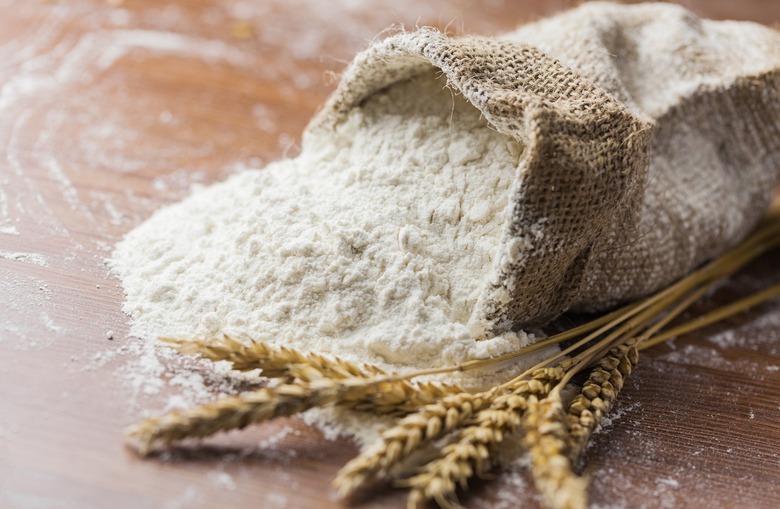How To Heat-Treat Flour
If you've ever baked cookies and ate a little bit of the cookie dough during the baking process, then you know the stomachache that can follow. But have you ever wondered why that is? Believe it or not, there is a very simple step you can take to avoid this, and it's by heat-treating your flour.
To understand why you should heat-treat flour, it's first necessary to understand why you shouldn't eat raw flour. When wheat kernels grow outdoors, they're exposed to salmonella and E. coli bacteria. Though wheat kernels are sifted and cleaned before being turned into flour, the bacteria isn't killed completely.
Heat-treating the flour ensures that the bad bacteria are killed, so that the flour can be used in no-bake desserts and more.
Luckily, heat-treating flour is quite easy. The simplest way to do this is by putting flour into a bowl and microwaving it on high until it's 165 degrees. The second option is to heat the flour in the oven. For this technique, you should preheat the oven to 300 degrees, spread the flour over a baking tray and bake it for two-minute intervals until the temperature hits 165 degrees.
Now that you know how to heat-treat flour, you can have all of the edible cookie dough that you want. If you're looking to further expand your baking know-how, check out these 25 ingenious hacks for amateur bakers.
